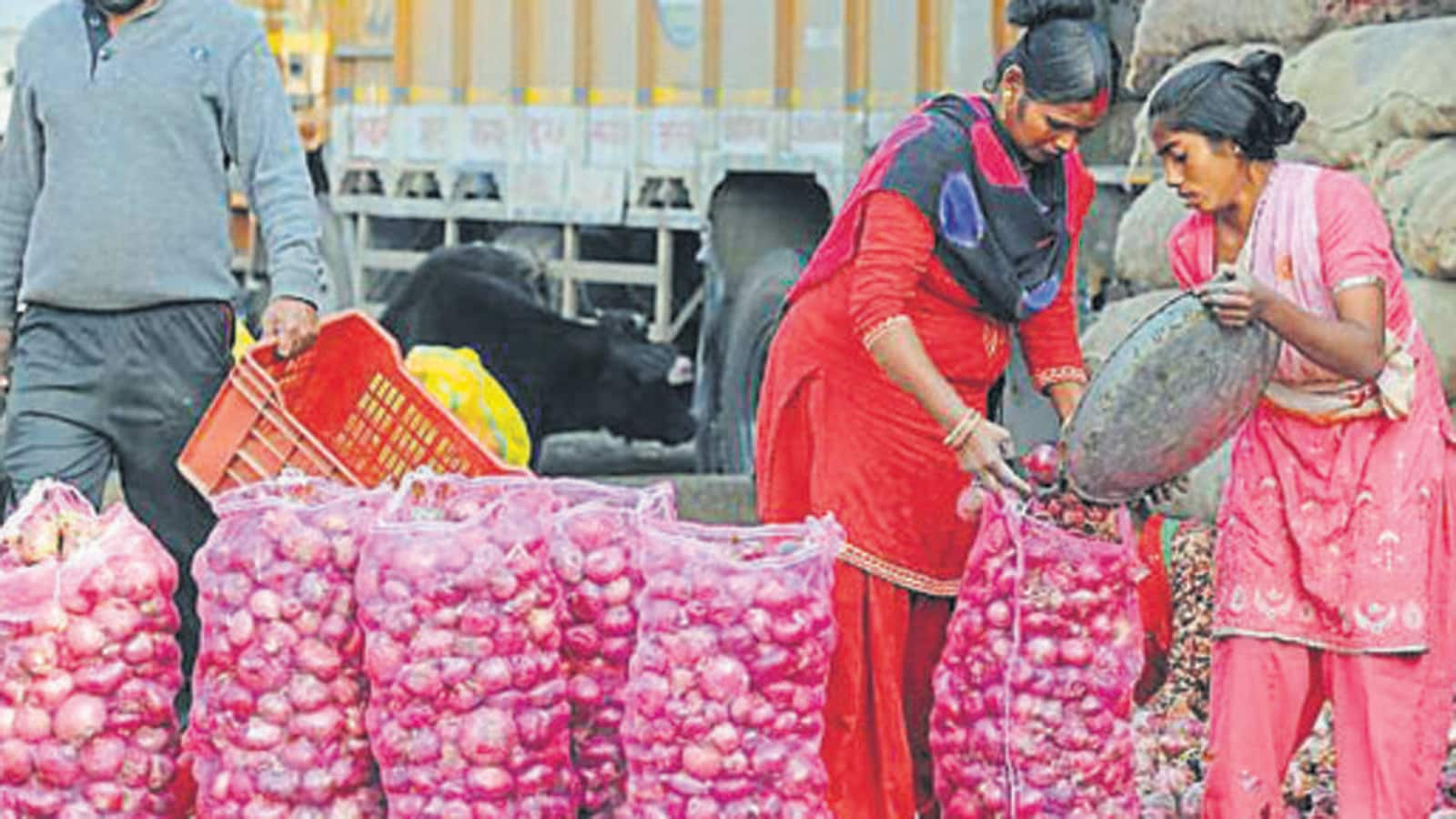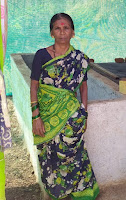May 1 is marked as the International Workers Day, globally. This year’s theme “Act together to build a positive safety and health culture”, notes the importance of a cohesive action to address the vagaries of the COVID-19 pandemic. For this edition of our newsletter, we bring a conversation with Dr. Vibhuti Patel, the well-known gender economist, and women’s rights activist. She delves deep into what are the existing trends of female labor participation in India. Read the excerpts from the interview. Her LinkedIn profile here:
As per the United Nations, Women constitute ½ of the world’s population, 2/3 of the world’s work force but get 1/10th of the world’s income and 1% of the world’s Wealth.
Q1: How would you define work participation of women in labour force? Why is it important to the economic growth of a nation? What are the various aspects when one studies it?
“Work” can be defined as the physical or mental effort or activity directed toward the production or accomplishment of something. Women all around the world have been doing paid, underpaid and largely unpaid work in homes, factories, fields, forests and mines. Over and above 3 Cs-cooking, cleaning and caring, large number of women do activities such as collection of fuel, fodder and water, animal care, kitchen gardening, raising poultry that augment family resources. If women would not this work; these goods would have to be purchased from the market. Unpaid care economy plays pivotal role in the economic growth of the nation in the developing as well as industrially advanced nations.
For the framing of development policies, national level statistics is the principal data input, but this is largely impaired by the undercounting of women, both as workers and those available for work. The first barrier is of course the definition of work vis-à-vis women’s work. We continue to relate work only to remunerative aspects of work as work. Indian women are engaged in two kinds of work; one that produces an income and other that does not. They are known as paid and unpaid work respectively. Even where women are doing work which is market-oriented, the special characteristics of women’s work make such work ‘invisible’, ‘non-recognised’ as for example, home based piece rate workers. The census concept of ‘work’ overemphasize production for market and although it does include some non-market production for own consumption such as cultivation where men are also involved, it excludes by a strange logic other type of production for own consumption such as livestock maintenance (done mostly by women) and hence these figures do not correspond with the non-market output in the national accounts.
The lack of freedom of choice, power and material resources, traditional gender roles and norms, stand – in the way of women’s development, as is evident in most parts of the world. Intersectional vulnerabilities of caste, class, race, ethnicity, religion, geographical locations and gender keep large majority of women in a precarious economic status. Significantly, even in the pyramid of poverty, women are the poorest of the poor and at the rock bottom. Hence all efforts to reduce poverty are inseparable from action agenda of the gender equity and gender equality based on intersectional justice. Researches indicate that gender equality measures that are gender responsive in the long run leads to reduction of poverty. In fact, unequal power structures for women and men constitute an impediment to economic growth and substantive democratic development. Equal opportunities for women and men to own land and assets, to earn money and to participate in working life, are essential for sustainable development in the long run.

Source: NSSO, 68th Round, Report No. 554, Employment and Unemployment Situation in India, 2011–12 and Periodic Labour Force Survey, 2017–18, Ministry of Statistics and Programme Implementation, National Statistical Office, Government of India
Source: NSSO Rounds 38th(1983-84), 50th (1993-94), 61st (2004-2005), 68th, 75th) (2017-18)
Triple Burden
Source: Paid and Unpaid Work of Women & Men: Time Use Survey, 2019: Ministry of Statistics & Programme Implementation, Government of India, 2020
Women’s Indian Chamber of Commerce and Industry’s (WICCI) Council of Ethics released a survey-based report, The Annual Review on the State of Sexual Harassment in India, in March 2022, which found that 50 percent and 55 percent of respondents respectively had experienced “physical contact or advances” or inappropriate touching, including pinching, patting, rubbing, or purposefully brushing up against another person” at least once at the workplace. Of the people who faced sexual harassment at the workplace, 55.2 percent decided not to file a complaint. They felt helpless and reported that that such sexual pressure is unwelcome, it is deliberate, it is about male privilege and dominance. According to India's constitution, sexual harassment infringes the fundamental right of a woman to gender equality under Article 14 of the Constitution of India and her right to life and live with dignity under Article 21 of the Constitution.27 The Supreme Court has taken a broad interpretation of what constitute “the workplace” too by not limiting the workplace to a certain geographical area.
Wage Gap
Women are often in situations where their advancement and promotion within the hierarchy of an organization in terms of their qualification and ability is stopped at a lower level because of some form of discrimination. Glass Ceiling is believed to be an unofficial, invisible barrier that prevents women and minorities from advancing in businesses. When working women are at the lower level, due to misogyny in the ecosystem, women themselves do not aspire for higher-level positions. Patriarchal bias in the corporate milieu hampers their career progression as compared to their male counterparts; this is referred to as the “sticky floor”. ILO states, “When women are able to attain higher-level management positions, they often find themselves in management support functions that do not lead to the highest-level management jobs. This phenomenon is also known as the “glass walls”. Even when women do enter the labour force, their participation rates drop significantly with age, which is the time when women are experienced enough to assume higher positions and more responsibilities at work. This attrition or exit of qualified women at higher career levels from companies and organizations is often referred to as the “leaking pipeline”. It leads also to a shortage of women in senior management posts to serve as role models.”
Q3. Are there any sectoral/ profession skews that become evident while looking at the workforce participation of women?
Q4. What is vulnerable employment and what are the reasons for women to be bearing the burden of the phenomenon?
Women are over-represented in the informal sector worldwide. This basic fact has several dimensions. Firstly, the informal sector is the primary source of employment for women in most developing countries. The majority of economically active women in the developing countries are engaged in the informal sector. In India, the informal sector accounts for nine out of every ten women working outside agriculture. The proportion of women workers in the informal sector exceeds that of men in most countries. Thirdly, women’s share of the total informal workforce outside of agriculture is higher than men’s share in 9 out of 21 developing countries for which data are available.
However,
women opt to continue in the informal sector not necessarily because
of a lack of choice, but because of the flexibility of working arrangements and
a wider range of opportunities.
- the
majority of women in the informal sector are own account traders, vendors
and producers or casual and subcontract workers; relatively few are
employers who hire paid workers.
- men
and women tend to be involved in different activities or types of
employment even within the same trades: in many countries, for example,
male traders tend to have larger scale operations and to deal in non-food
items while female traders tend to have smaller scale operations and to
deal in food items.
- average incomes of both men and women are
lower in the informal sector than in the formal sector.
- the gender gap in income/wages appears higher
in the informal sector than in the formal sector and exists even
when women are not wage workers as markets are socially constructed to
favour men.
- the relatively large gender gap in
income/wages in the informal sector is largely due to two
interrelated factors: informal incomes worldwide tend to decline as
one moves across the following types of employment: employer –
self-employed – casual wage worker – sub-contract worker women
worldwide are under-represented in high income activities and over-represented
in low income activities (notably, subcontract work)
Here it is important to note the links between being a woman, working in the informal sector, and contributing to growth. Even though the average earnings of women in the informal sector are low, the female informal workforce contributes significantly to gross domestic product (GDP). Women informal traders contribute a significant share (20-65%) of GDP in the trading sector. The contribution of women in the informal sector to total GDP is greater than their share of employment in the informal sector. This is because women are more likely than men to engage in multiple activities in the informal sector. For many years certain assumptions existed like women either could not do a job or that they did not need to do it. The consequence of this kind of thinking has been that gender segregation has affected women’s and men’s concentration in different occupations, industries and levels in workplace hierarchies. This has led to gender discrimination and has perpetuated gender inequality within the world of work.
Issues of rural development and women's empowerment receive critical attention in various debates due to efforts of Mahila Kisan Adhikar Manch (MAKAM). Trends and patterns of agricultural development in the post liberalisation period has intensified marginalisation of women farmers and agricultural labourers. Transformations in rural India have ushered in water and fodder scarcity that have undoubtedly increased the drudgery of rural women’s life.
Q6. What do you see the role of various agencies- government and non-government as well as corporate sector in ensuring a shrinking gender gap amongst the workforce in India?








.jpeg)


.jpg)
.jpg)
.jpg)
,%20at%20her%20kitchen%20garden.jpeg)


.jpg)
.jpg)



,%20high%20risk%20mother.jpeg)
.jpeg)
.jpeg)
.jpeg)
.jpeg)


.jpeg)
.jpeg)
.jpeg)
.jpeg)

